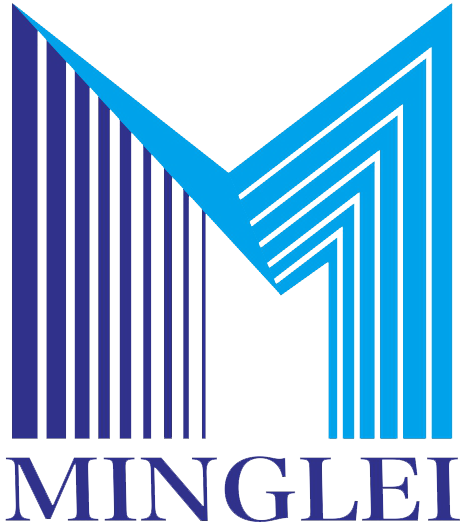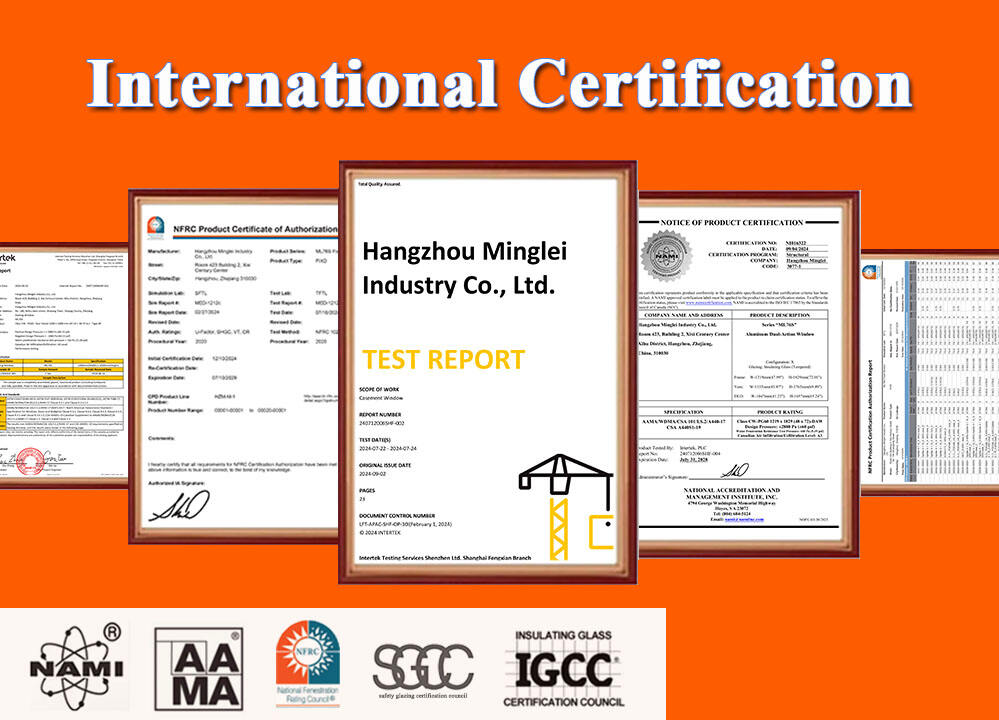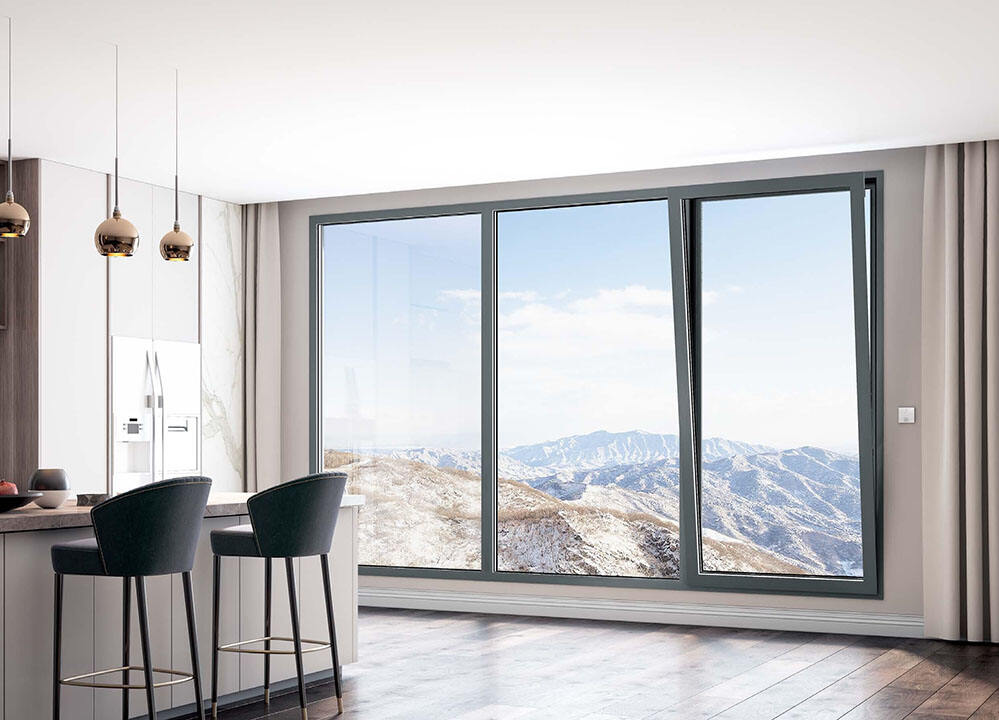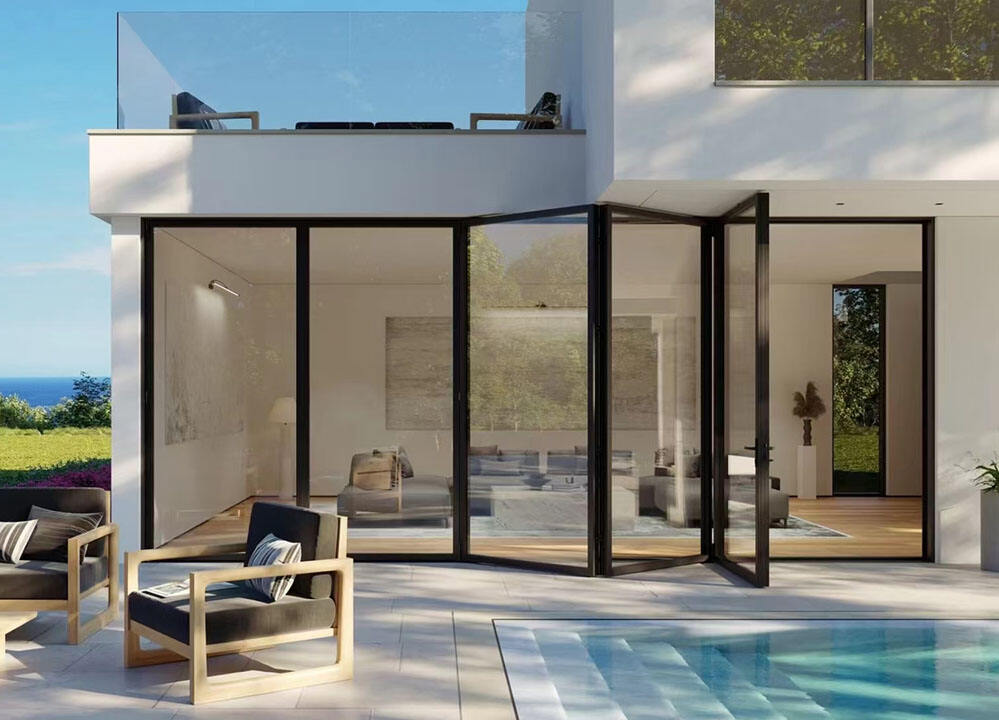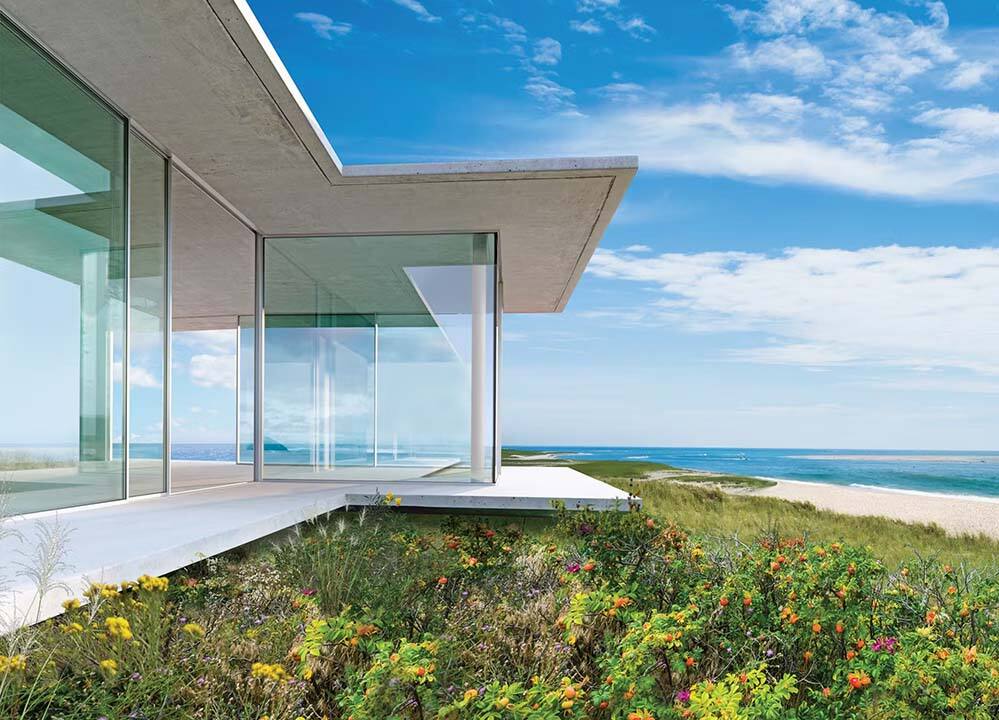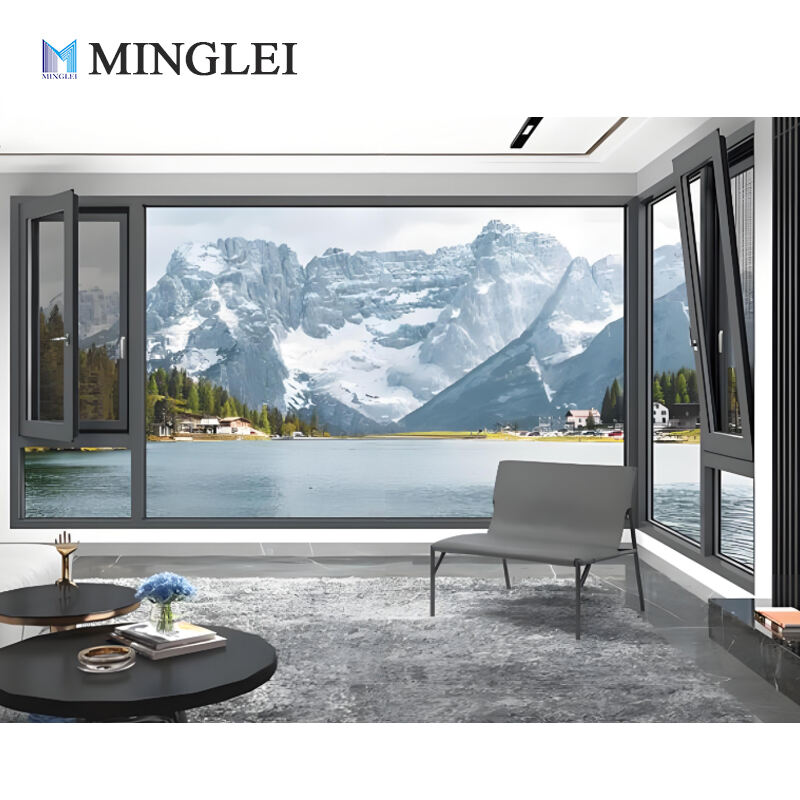Dual-Operation Functionality: How Tilt and Turn Windows Redefine User Control
Understanding the Tilt and Turn Operating Modes for Optimal Ventilation
Tilt and turn windows from Europe come with two different ways they work, helping homeowners manage air flow without sacrificing security. When in tilt position, the top part of the window opens just enough to let fresh air in but still keeps most of the weather outside. Think of it as getting some breeze without letting all the cold or rain inside. The turn function is totally different though. The whole window swings open like a regular door, making it much easier to clean those hard to reach spots or get out quickly if needed. What makes these windows so great is how they fit what people need during different seasons. During colder months, the small opening provides just enough ventilation without losing heat. Come summertime, flipping to full open mode brings in lots of fresh air. Most standard windows simply can't match this kind of flexibility for everyday living.
Advanced Ventilation Control Through Precision Engineering
This window mechanism features a complex hinge system with adjustable friction components that let homeowners control airflow down to the millimeter level. Tilt and turn windows work differently from older sliding or double hung models because they actually seal against drafts when operated in either position thanks to special compression seals that engage regardless of how the window is positioned. A recent report from the National Fenestration Rating Council found these modern designs cut down on air leaks by about two thirds when compared with regular casement windows sold across America today.
Comparison with Traditional American Window Designs in Functionality
Key advantages over conventional designs include:
- Space efficiency: Inward opening requires 60% less exterior clearance than outward-swinging casements.
- Weather resilience: Dual sealing points prevent water ingress even during tilted ventilation.
- Safety: Centralized locking mechanisms are more resistant to forced entry than sliding window latches.
Inward-Opening Design Benefits for Interior Accessibility and Safety
When doors swing inward, it actually makes things safer and easier for everyone involved. Cleaning both sides of the glass becomes possible from inside the building, which is super important for those living in tall apartment complexes where reaching outside might be tricky. Homes that have little ones running around or furry friends tend to benefit from the tilt feature too. This setting keeps openings no bigger than about four inches wide, something that meets all the standard requirements for preventing falls in residential areas across America. Plus, during emergencies, firefighters and other rescue personnel get straightforward access through these doors since they open completely inward, creating a nice 24 inch pathway free from any obstacles sitting outside on the patio or balcony area.
Energy Efficiency and Thermal Performance of European Tilt and Turn Windows
Double and triple glazing with uPVC frames for superior insulation
European tilt and turn windows bring together double or sometimes triple glazing with those tough uPVC frames to cut down on heat moving through them, which means homes lose around two thirds less warmth compared to old fashioned single pane windows. What makes these windows so good at keeping heat in? Well, there's either regular air or special argon gas trapped between the glass layers that stops heat from just running straight through. And the uPVC material itself doesn't conduct heat very well either, so the frames don't become little escape routes for all that precious warmth. Put it all together and these windows keep houses comfortable throughout the seasons without needing the heating or cooling systems to work as hard. Most homeowners find their energy bills drop somewhere between 20% and maybe even 35% after switching to this kind of window system.
Air and water tightness: Sealing technologies that enhance energy efficiency
Compression seals integrated into the operating mechanism achieve near-zero air infiltration, far surpassing traditional sliding windows. Multi-layer gaskets maintain integrity across extreme temperatures (from -40°F to 150°F), eliminating drafts responsible for 25–30% of residential energy waste. Internal water drainage channels manage moisture without compromising airtight performance.
U-factor, NFRC certification, and performance metrics explained
Triple glazed windows can reach impressive U-factors down around 0.15 according to tests done by the National Fenestration Rating Council. When looking at Solar Heat Gain Coefficients, these typically fall between 0.20 and 0.60. This range allows homeowners to pick options suited for their particular climate conditions. Windows with lower SHGC ratings help keep out excessive heat during summer months in places like Florida or Arizona. Conversely, those with higher SHGC numbers work better in colder climates such as Minnesota or Alaska where capturing sunlight helps maintain indoor temperatures. The NFRC label system gives consumers clear numbers to compare different window products side by side. Homeowners shopping for new windows should check these labels carefully since they show important performance metrics across multiple categories including how much light comes through the glass as well.
Thermal performance data review across U.S. climate zones
| Climate Zone | Optimal Configuration | Annual Savings* |
|---|---|---|
| Hot-Dry (AZ, NV) | Double glazing + Low-E coating | $320-$480 |
| Mixed-Humid (GA) | Triple glazing + argon fill | $280-$410 |
| Cold (MN, WI) | Triple glazing + warm-edge spacers | $510-$740 |
| *Compared to ENERGY STAR® double-pane baselines (2023 data) |
High-performance paradox: Why adoption lags despite proven efficiency
Even though European tilt and turn windows offer around 15 to 25 percent better energy efficiency compared to top tier American products, they still capture under 4% of the market according to FHFA data from 2024. Why? The main obstacles are the significantly higher price tag, typically about 30 to 50 percent more expensive at purchase time. Plus most contractors aren't familiar with installing these units since they require extremely tight framing specifications down to less than 1/8 inch tolerance. Still worth considering though because these windows last well over 40 years, which is basically twice as long as regular vinyl models on the market today. That kind of longevity makes them a smart investment despite the bigger initial outlay.
Enhanced Security Features of European Tilt and Turn Windows
Multi-Point Locking Systems for Maximum Intrusion Resistance
Tilt and turn windows from Europe come equipped with multi point locking systems that can activate as many as seven steel reinforced bolts along the window frame. What makes this system so secure is that it needs all those contact points to be unlocked at once for anyone trying to break in. Tests back this up too showing these locks work about 83 percent better than regular single point locks when put through their paces in lab conditions last year. The way these parts lock together actually stops common break in techniques like prying open the window, cutting through with tools, or even hitting it repeatedly until something gives way.
Security Comparison: European Tilt and Turn vs. Standard U.S. Windows
American windows typically depend on simple sash locks that can be easily tampered with, while European designs incorporate a more sophisticated three step locking mechanism. Independent tests have demonstrated that these locking systems can handle around 1500 Newtons worth of force during impact testing, which is about three times stronger than what most standard vinyl windows offer. Another security advantage comes from how they open inward rather than outward like many US windows do. This means there are no visible hinges or other hardware components sticking out from the outside where someone might try to access them directly.
Customization and Aesthetic Integration for U.S. Architectural Styles
Color, texture, and glazing options for personalized design
The European tilt and turn windows market offers over 48 RAL colors plus various textures that match different local styles. Architects often pick satin bronze tones when working on beachfront houses in New England, whereas many choose matte white finishes for those sleek modern builds down in the Southwest. These triple glazed panes filled with argon gas cut down on heat from sunlight by around 60%, yet still let plenty of daylight through. When it comes to designing today, there's a real focus on making sure these windows blend well with historic buildings. Take those old Craftsman bungalows for instance they keep their classic look but get all the benefits of modern insulation and energy efficiency at the same time.
Material and finish choices to match American residential aesthetics
Modern uPVC profiles can mimic wood grain patterns down to 0.5mm accuracy thanks to CNC milling techniques, providing long lasting options that don't need constant upkeep like traditional wood. For city apartments and loft spaces, aluminum clad versions come in colors like architectural bronze or graphite black. These materials meet impressive air tight standards at around 0.95 cubic feet per minute per square foot according to ASTM E283 testing, all while looking great in industrial settings. What makes these products really stand out is how they work well with different home styles from old fashioned colonials to modern ranch houses. Some manufacturers have even successfully installed them in historic neighborhoods where building regulations would normally make such changes impossible.
Hardware selection for seamless architectural integration
Hidden tilt and turn mechanisms cut down on visual mess around windows by about 78 percent when compared to old fashioned crank systems according to last year's Fenestration Survey. These come with handle options too black nickel or brushed brass finishes that actually match what's already on doors. The windows also feature built in rain drip channels which keep outside surfaces looking neat and tidy. Designers have worked hard to make sure everything looks right together. Window proportions fit nicely with mullions found in those classic prairie style houses as well as mid century modern designs without sticking out like sore thumbs.
Market Value and Cost-Benefit Analysis in the U.S. Building Sector
European Tilt and Turn Windows Cost vs. U.S. Market Alternatives
European tilt and turn windows might cost about 5 to 7 percent more upfront compared to regular double hung or sliding models, but they last much longer too. The average lifespan is around 19 years, which beats the typical 12 to 15 year life span seen with standard vinyl windows. Looking ahead, recent industry reports from 2025 predict that construction spending across North America could hit nearly $3.86 trillion by 2030. Energy efficiency seems to be a big driver here, accounting for roughly one third of all money spent on renovations. Most builders find that the extra cost gets paid back within six to eight years because these windows leak far less air. Air leakage rates are under 0.07 cubic feet per minute per square foot compared to standard windows at about 0.3 cfm/sq ft. Plus there's less strain on heating and cooling systems overall.
Advantages for Builders, Developers, and Long-Term Property Value
According to industry reports, properties with tilt and turn windows tend to lease out about 9 to 12 percent quicker in multifamily developments. Tenants just love these features because they cut down on monthly bills by around 18%, thanks to those thermally broken frames as noted by the U.S. Department of Energy back in 2023. For homebuilders looking at their bottom line, there's real money to be saved through Section 25C tax credits when they get that ENERGY STAR Most Efficient certification. Commercial architects also benefit from this trend, picking up valuable LEED points for buildings that maintain better airtightness and manage solar heat gain much more effectively. The SHGC rating drops from the standard 0.40 down to impressive 0.23 compared to regular glass installations, which makes a noticeable difference in energy performance over time.
Smart Integration and Insect Screen Add-Ons Enhancing Market Appeal
Smart actuators that work with Alexa and Google Home can automate ventilation depending on what the indoor air quality sensors detect something homeowners really want these days according to those 2025 smart home surveys where almost 3 out of 10 people mentioned this as important. Another big selling point? Those integrated retractable insect screens with their 85 micron mesh that cuts down noise by at least 3 decibels. For folks living down south especially in places like Florida or Georgia this makes all the difference since around two thirds of buyers there care deeply about keeping bugs out while still wanting hardware that stands up to hurricanes. Many products now meet those ASTM E1886-22 standards for storm resistance which is pretty reassuring when hurricane season rolls around.
FAQ
What is the dual-operation functionality of tilt and turn windows?
Tilt and turn windows offer two positions: a tilt position where the top of the window opens slightly for ventilation without losing security, and a turn position where the entire window opens like a door for full ventilation and easy cleaning access.
How do tilt and turn windows improve energy efficiency?
These windows enhance energy efficiency through double or triple glazing with uPVC frames, compression seals, and advanced sealing technologies, greatly reducing heat loss and air infiltration compared to traditional window designs.
Are European tilt and turn windows more secure than standard U.S. windows?
Yes, European tilt and turn windows are equipped with multi-point locking systems which are significantly more secure than the single-point locks typically used in U.S. windows, providing enhanced resistance to break-ins.
Why are tilt and turn windows more expensive?
They are generally more expensive due to their advanced design features, higher energy efficiency, and longer lifespan, but offer long-term savings in energy bills and increased property value.
Can tilt and turn windows be customized to match U.S. architectural styles?
Yes, these windows offer a variety of colors, textures, and finishes to suit different architectural designs, ensuring aesthetic and functional integration into American homes.
Table of Contents
- Dual-Operation Functionality: How Tilt and Turn Windows Redefine User Control
-
Energy Efficiency and Thermal Performance of European Tilt and Turn Windows
- Double and triple glazing with uPVC frames for superior insulation
- Air and water tightness: Sealing technologies that enhance energy efficiency
- U-factor, NFRC certification, and performance metrics explained
- Thermal performance data review across U.S. climate zones
- High-performance paradox: Why adoption lags despite proven efficiency
- Enhanced Security Features of European Tilt and Turn Windows
- Customization and Aesthetic Integration for U.S. Architectural Styles
- Market Value and Cost-Benefit Analysis in the U.S. Building Sector
-
FAQ
- What is the dual-operation functionality of tilt and turn windows?
- How do tilt and turn windows improve energy efficiency?
- Are European tilt and turn windows more secure than standard U.S. windows?
- Why are tilt and turn windows more expensive?
- Can tilt and turn windows be customized to match U.S. architectural styles?
 EN
EN
 AR
AR
 CS
CS
 DA
DA
 NL
NL
 FI
FI
 FR
FR
 DE
DE
 EL
EL
 HI
HI
 IT
IT
 JA
JA
 KO
KO
 PL
PL
 PT
PT
 RU
RU
 ES
ES
 SV
SV
 IW
IW
 ID
ID
 LV
LV
 LT
LT
 SR
SR
 SK
SK
 SL
SL
 UK
UK
 VI
VI
 ET
ET
 HU
HU
 MT
MT
 TH
TH
 TR
TR
 FA
FA
 MS
MS
 GA
GA
 HY
HY
 UR
UR
 BN
BN
 GU
GU
 TA
TA
